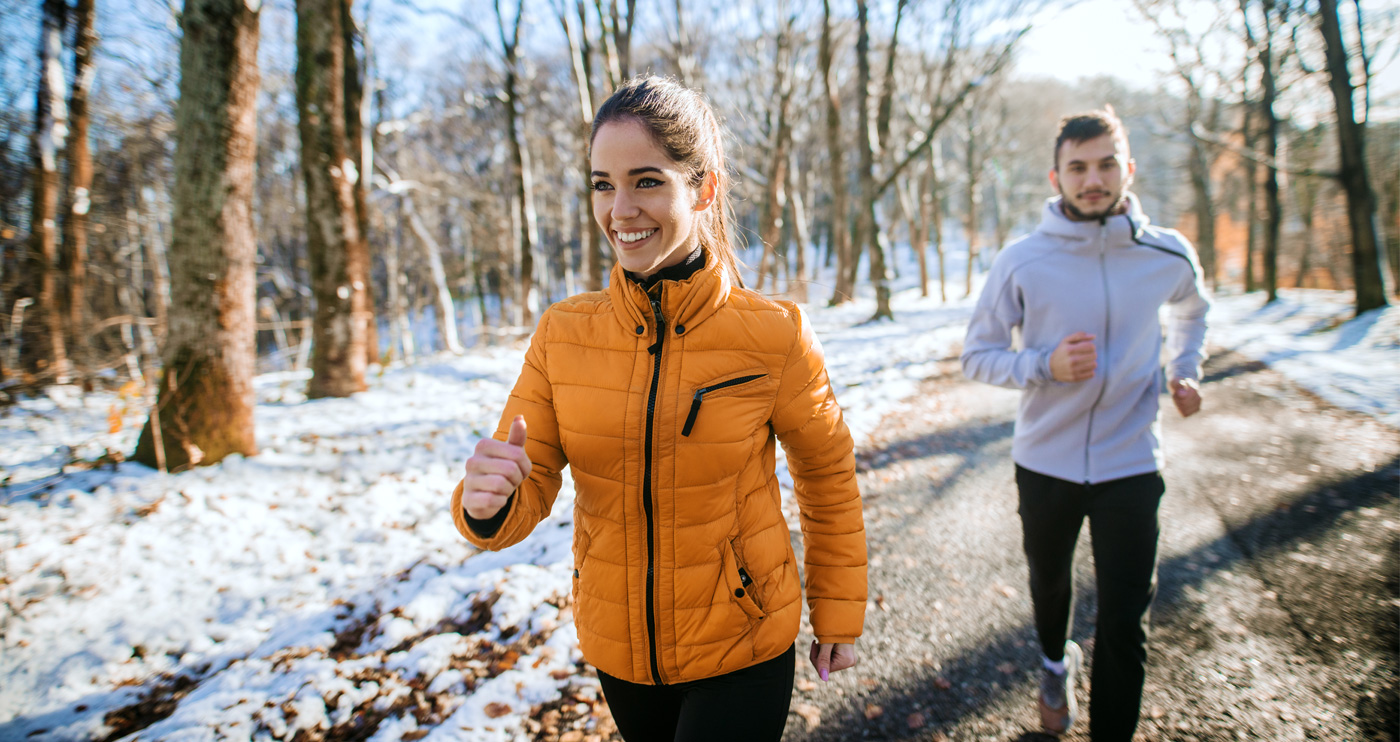
It’s no secret that most people tend to put on weight in winter. Winter holidays are chock full of comfort foods, and nobody’s really in a hurry to go out for a jog in sub-zero temperatures. If you’re trying to stay committed to a healthy lifestyle, no matter the season, it’s important to keep your exercise routine as consistent as you can — and yes, that means winter workouts. Fortunately, there are plenty of ways you can stay safe, comfortable, and active all season long:
1. There’s no bad weather, just inappropriate clothing.
In Scandinavian countries, it’s commonly said that there’s no such thing as bad weather, just the wrong outfit. Take a few hints from places where winter is even longer and colder, and dress for the season. That means more than just dressing warmly — you also have to keep dry. The most surefire way to feel the cold is to let yourself get wet, so make sure to invest in some serious sweat-wicking active wear. Avoid cotton base layers, which can hold sweat, rain, and melted snow against your skin, and opt for wool, silk, or high-tech synthetics that dry quickly and keep you warm.
In addition to dressing dry, you also want to wear layers. This will help keep you warm in the beginning of your workout, while giving you the freedom to remove clothing as you warm up to keep from overheating. Invest in bright, reflective gear to help keep you visible in gray weather.
2. Keep your hands, feet, and other extremities warm.
In cold weather, your body automatically moves blood from your extremities to your core. That leaves these areas more susceptible to chills, numbness, and even frostbite. Make sure your gear keeps your feet, hands, face, and ears warm. Wool is a useful material here, since it’s great at trapping a layer of warm air near your skin, and can keep you warm even if it gets wet.
3. Warm up, cool down, and watch the wind.
You can do anything in winter that you can in summer (with the possible exception of swimming laps outdoors, of course), as long as you do it carefully. Warming up is important, because increasing blood flow to your muscles can help prevent injuries — especially in cold weather. Cooling down is also important, because it helps you avoid muscle soreness. Start your workout by exercising against the wind. When you’re ready to head home, damp and sweaty, the wind will be at your back and you’ll be less likely to get chilled.
4. Keep your skin (and yourself) hydrated.
While sweat is your enemy when it comes to avoiding a chill, dry, chapped skin isn’t very comfortable either. So, while you want your clothing to help keep you dry, you also want to keep your skin moist. Load up on moisturizer (apply after washing your hands and face, when your skin is still slightly damp), and drink plenty of water. A heavier moisturizer, like Vaseline, can help give your skin some extra protection from wind burn. Apply a thin layer to your nostrils, lips, and the top of your ears. Lastly, slather on some sunscreen, even on areas you might not expect to get burned. It might not seem sunny out, but you can still get a sunburn in winter. This is especially true if there’s a lot of snow on the ground, which can reflect up to 90% of ultraviolet light.
5. Make sure you have traction.
Unfortunately, your favorite jogging shoes might not cut it in winter. Snow, ice, and rain make for slippery surfaces, which can pose a danger to you. Look for footwear intended for exercising in winter, and make sure you stick to areas which have been salted or sanded. If you do choose to use spikes on your shoes to help with traction, avoid running on paved surfaces. While spikes are great for gripping slippery areas, they become a liability when it comes to hard pavement.
Working out in winter isn’t really any different from working out at any other time a year, it just takes a little more preparation. As long as you’re in the right gear, keep your skin protected, stay hydrated, and warm up and cool down appropriately, there’s no reason why you can’t enjoy exercising outdoors just as much in January as you can in June.